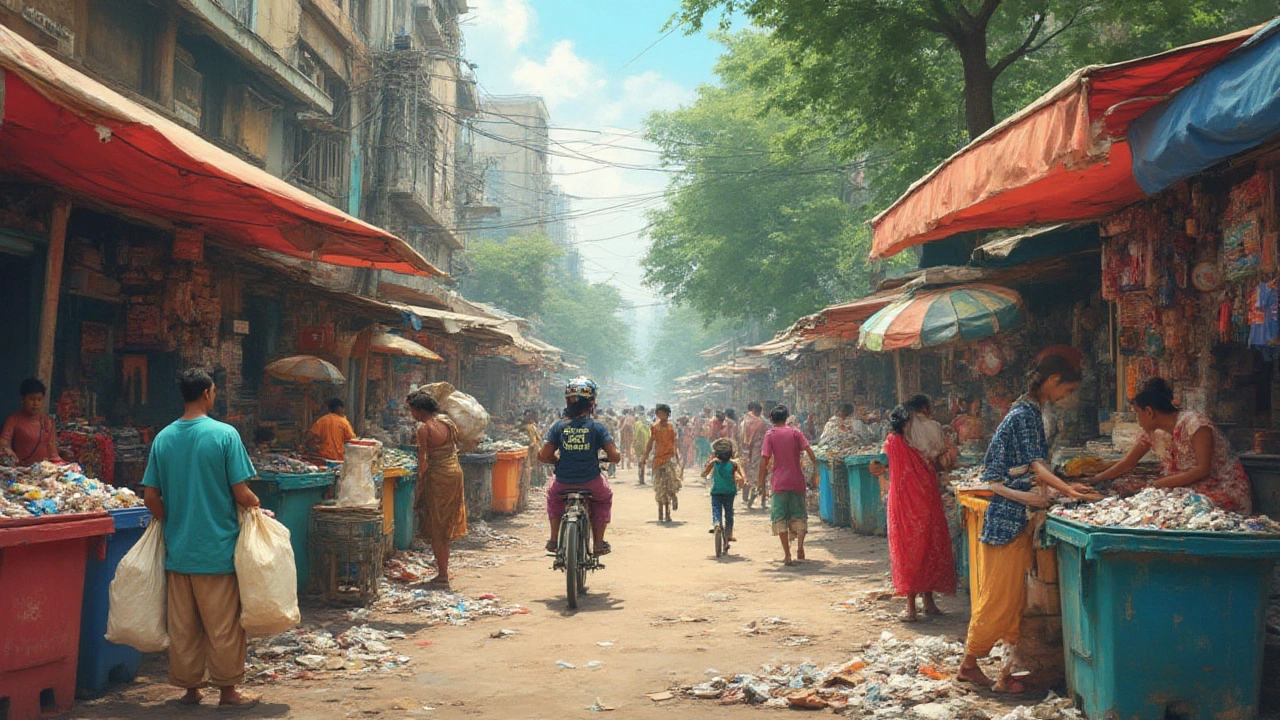- Food Industry Units Explained: Types, Functions & Key Metrics Oct 8, 2025
- Top Textile Manufacturing Giants: Spotlight on Global Leaders in 2025 Jan 28, 2025
- Indian Textile Industry Collapse: What Really Happened and What It Means for Manufacturers Apr 23, 2025
- Does Your Netflix India Subscription Work in the USA? Everything You Need to Know Jun 25, 2025
- Expensive Fabrics in India: What Makes Them Costly? Jun 8, 2025
Environment Insights: Zero Waste, Plastic Pollution & Sustainable Living
Welcome to the Environment hub where you’ll find straight‑forward takes on the biggest green challenges of today. We’re not here to preach; we’re here to show what’s really happening, why it matters, and what you can do right now.
Zero Waste: Myths and Realities
Ever heard a country brag about being “zero waste”? It sounds great, but the truth is more complicated. Most nations still send some material to landfills or incinerators, even if they recycle a lot. The key is the “zero” part – it usually means they’ve reduced waste to a level where landfill use is minimal, not completely eliminated.
What works? Strong collection systems, strict packaging rules, and a culture that values repair over replace. For example, countries that ban single‑use plastics see a big drop in trash that ends up on streets. But even they need solid composting and recycling infrastructure to keep the waste loop closed.
If you’re wondering how you can push your own community toward zero waste, start small: bulk‑buy staples, bring reusable bags, and support local repair cafes. Each step cuts the total waste you generate and sends a signal to businesses that sustainable choices matter.
Plastic Pollution: Who’s to Blame?
Plastic trash in the ocean isn’t just a random mess – it’s often linked to how plastic is made and handled. Manufacturers that use cheap, single‑use resin have a direct line to the waste that ends up in rivers and seas. When production waste isn’t properly filtered or when discarded packaging leaks out, the problem spreads fast.
Look at the supply chain: raw material extraction, molding, packaging, and final product distribution. Every stage adds an opportunity for leaks. Companies that invest in closed‑loop systems – where scraps are melted and reused – cut their environmental footprint dramatically.
What can you do? Choose products from brands that publish their plastic‑use policies, demand transparent recycling labels, and support legislation that holds manufacturers accountable for end‑of‑life waste. Your buying power can push firms to adopt cleaner processes.
Beyond buying, consider how you handle plastic at home. Separate what can be recycled, clean it, and avoid contaminating the recycling stream. When you see a product with unnecessary plastic, ask for a greener alternative.
All these actions tie back to a bigger idea: waste management works best when everyone – from factories to families – shares responsibility. The environment isn’t a separate entity; it’s the sum of our daily choices.
Stay tuned for more posts that break down waste myths, expose hidden polluters, and give you easy habits to live more sustainably. The goal isn’t perfection; it’s progress, one practical step at a time.
The Truth About Zero Waste Countries: Can Any Nation Claim Zero Landfills?
- Aarav Sekhar
- Jul 3, 2025
Ever wondered if any country truly generates zero waste? This in-depth look reveals the reality behind 'zero waste' claims, leading nations, and what actually works.
Who Still Dumps Garbage in the Ocean: The Role of Plastic Manufacturers
- Aarav Sekhar
- Apr 3, 2025
Ever wondered who's responsible for still dumping garbage in our oceans? Shockingly, plastic manufacturing companies are major contributors to this problem. Despite global awareness and efforts, certain practices within these companies continue to pollute our waters. Dive into the complex world of plastic production, unravel the industry's dirty secrets, and explore steps towards a cleaner future.
Who's Really Behind Plastic Pollution?
- Aarav Sekhar
- Feb 5, 2025
Plastic pollution is a growing environmental issue, with plastic manufacturing companies at the center of the debate. This article explores the role these companies play in pollution and whether we can hold them accountable. With insights into the industry's practices, it's time to understand who shoulders the responsibility for our planet's plastic woes.


